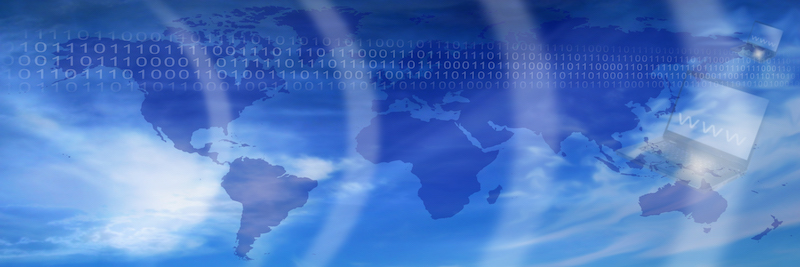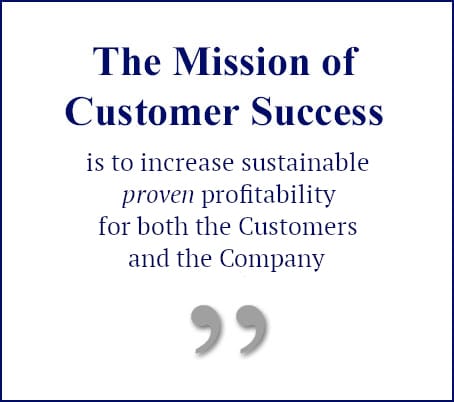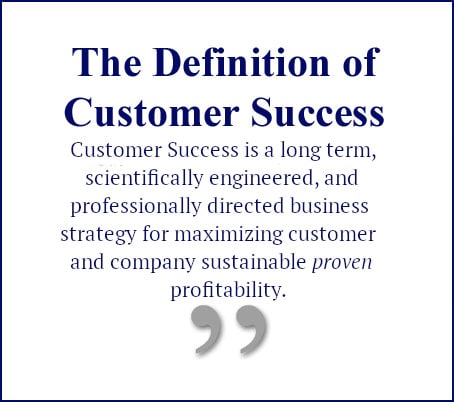Regardless of whether functions are embedded within the company’s own application or added afterward through use of 3rd party solutions, there are some standard capabilities that every Customer Success management team should have in order to be effective in accomplishing their mission.
Just as sales representatives need technology for working with contacts and leads prom prospect through to closure, Customer Success teams have a range of information management requirements for dealing with everything that comes after the handoff from Sales. Currently, only a small percentage of Customer Success teams have any kind of CS management systems available to them, and most have only a part of what is listed here — although that is slowly changing.
Meeting the requirements of the general categories listed below can be done in several ways. The most effective method is to find the best-designed product in each group and implement it. Another is to build your own, which is much less effective both in cost and functionality. The least desirable, only marginally better than doing nothing at all, is to try to craft and maintain spreadsheets.
For a list of all known vendors in the Customer Success technology space, click here. For a list of the categories below and the vendors whose products address them, click here.
The Customer Success Technology Suite
1. The Master Customer Record
Ideally, the ability to both access and edit/update data about the customer should be directly available to members of the Customer Success team from their main dashboard. Some Customer Success Management Systems maintain master customer records inherently within their applications, while others integrate with CRM systems or other systems of record for this information.
2. Application Engagement/Usage Tracking & Analysis
The ability to see in real time exactly what a customer is doing with the functions and features of the product is critically important for Customer Success teams. For software vendors, this capability can either be a design function of the company’s own technology or it can be added later via a 3rd party application. The functionality also includes license usage.
3. Value Management:
The mission of customer success is to increase sustainable proven value for both the customers and the company. Being able to monitor the return on investment (ROI) for the customer is therefore a vital capability, necessary for the preparation of regular Customer Value Reviews(sometimes referred to as QBR’s, etc.) Value Management functionality also includes deep churn analysis and reporting, tracking and reporting on up-sell and cross-sell potentials and actuals, and analysis of sales pricing, commitments and deal quality.
4. Customer Intelligence: Gathering, Reporting
Knowing what is going on with the customers’ business overall is very important for customer success managers. If key members of the customer’s management team leave, and otherwise stable relationship can quickly move into the at-risk category. Other significant factors can include mergers/acquisitions or general downturns.
5. Customer Feedback
Customer feedback concerning enhancement requests and/or about their perception of your company’s products, or company overall often can be transmitted in various ways. Regardless of the communication channel used, it’s vital that the feedback be captured, recorded and made readily available throughout your organization. Customer success managers have a key role to play in this area as they are the most likely people to gather the feedback, and therefore this functionality needs to be in their technology suite.
6. Customer Advocacy
Customers who are willing to serve as references for the quality of your products and company are strategically significant assets, and need to be managed accordingly. As with customer feedback, customer success managers are often the most likely people in your organization to know which customers are most suitable to be asked to be references. Social media activity is another key value. Your customer success technology suite should include the capability of tracking customer advocates and their effectiveness.
7. Data Integration / Synchronization
Over time, the various departments of your company will collect enormous amounts of very valuable data. Having that data accessible to the Customer Success team is a core need. The Customer Success Technology Suite must be able to accept data from and update other company systems such as the main CRM or Sales Force Automation tool, Customer Support ticketing system, Development’s bug-tracker, website visitation monitor, learning management systems, the project management system used by On-Boarding/Professional Services, Marketing Automation tools, etc.
8. Customer Health Monitoring
The ability to assess and to monitor the health of the ongoing customer relationships, both individually and as segments/portfolios is a core requirement for customer success teams. The technology used for tracking customer health should include predictive analytics and robust filtering and visualization capabilities. This category also includes the ability to map the customer journey in various ways, especially tracking progress according to individual Customer Success Plans and/or cohort monitoring.
9. Customer Success Manager Workflow Management
Each Customer Success Manager needs to have direct access to technology for tracking their daily work/process, including specific functionality for:
- Dashboard of tasks to be done by CSM; prioritization, status of assigned customers
- Status of assigned tasks, alerts
- Activity and outcome tracking/recording; Interaction category, duration, outcomes, volume, channel
- Best practices playbooks
- Playbook effectiveness / outcome monitoring
- Internal team communications/collaboration capabilities and tracking
- Project management
10. Customer Success Team Management
Just as individual Customer Success Managers need access to all available data about the customer, the Customer Success Executive requires in-depth knowledge about the functioning of the team as a unit. The CS executive dashboards and reporting capabilities need to include specific functionality for:
- Status of all tasks/activities by both individuals and the team
- Utilization of individual CSMs
- Effectiveness of individual CSMs
11. Self-Success Management / “tech-touch”
A major challenge facing all Customer Success teams is the question of scalability. Individual Customer Success Managers are expensive resources for a company to recruit and maintain, and not all interactions with the customers require human assistance. The determination of which classes of interactions need to be done with human resources and which may be automated is a strategic one, but the necessary automation resources must include:
- Knowledge base content creation, distribution and effectiveness tracking
- Automated e-mail distribution of content to individual customers & analytics
- Online community resources and usage analytics
- E-learning management
12. Communications Channels
A variety of communication channels needs to be readily accessible by the members of the Customer Success team. The technology should include:
- In-app messaging
- Text messaging
- Video-conferencing
- Online meetings (webinars, etc.)
- Phone
- Email Mgmt (Segmentation, list building, etc.)









